Articles > Geography
Think you know the 100 Largest US Lakes? Here’s the top 25 and some info on each.
1. Lake Superior
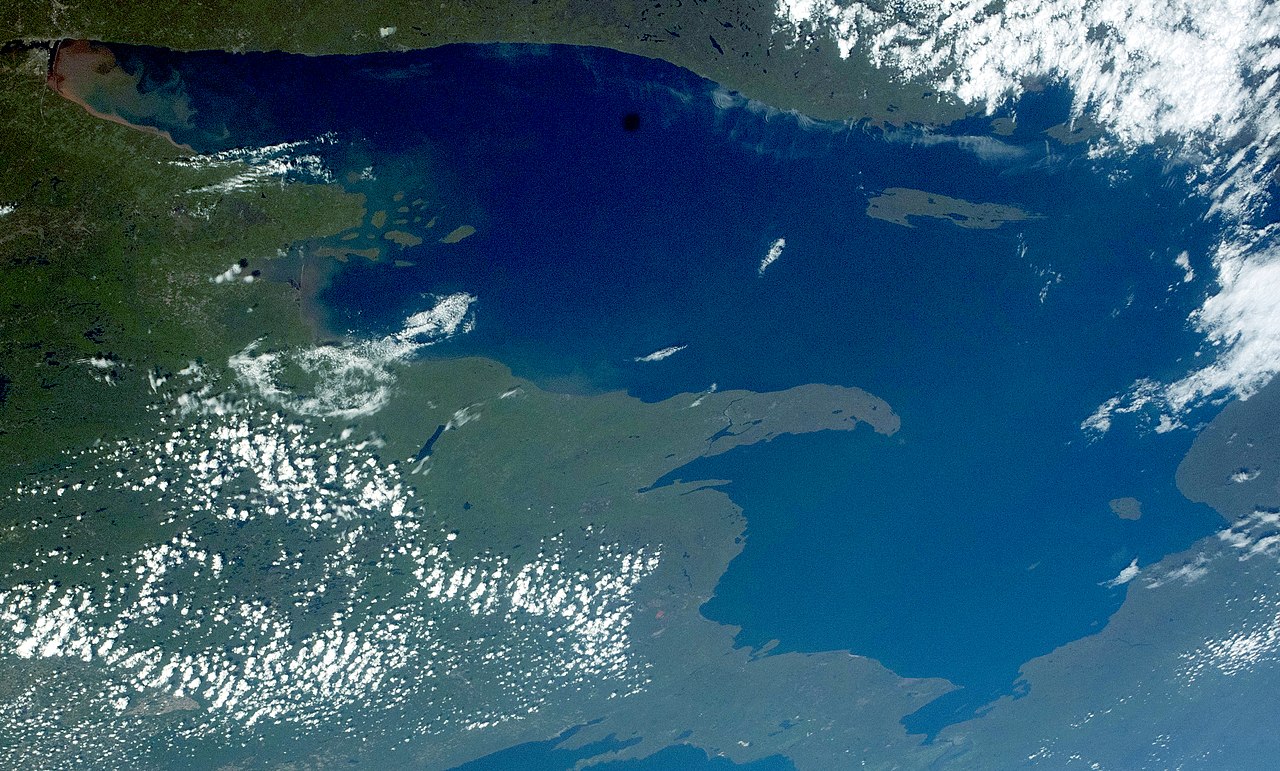
Lake Superior, the largest freshwater lake in the world by surface area, spans approximately 31,700 square miles. It borders the U.S. states of Minnesota, Wisconsin, and Michigan, as well as Canada. Known for its stunning natural beauty, Lake Superior features clear waters and rugged shorelines, including numerous islands. The lake is home to a diverse ecosystem, including fish species such as lake trout and whitefish. The area around Lake Superior is popular for outdoor activities, including fishing, hiking, and boating. The lake’s significant size and depth contribute to its role in regional climate moderation, affecting weather patterns in the surrounding areas.
2. Lake Huron

Lake Huron, with an area of 23,000 square miles, is the second-largest Great Lake and is bordered by Michigan and Ontario. The lake features a unique geography with numerous islands, the largest being Manitoulin Island. Lake Huron is known for its beautiful sandy beaches, making it a popular destination for vacationers. The lake supports a variety of wildlife, including migratory birds and diverse fish populations. Its clear waters are ideal for recreational activities such as swimming, sailing, and fishing. Lake Huron also plays a crucial role in the regional economy, supporting tourism and shipping industries.
3. Lake Michigan

Lake Michigan, the only Great Lake located entirely within the United States, covers approximately 22,300 square miles. It is bordered by the states of Wisconsin, Illinois, Indiana, and Michigan. The lake is famous for its stunning beaches and vibrant cities along its shores, including Chicago and Milwaukee. Lake Michigan is known for its recreational opportunities, including boating, fishing, and swimming. The lake’s diverse ecosystem supports numerous fish species, and its waters are vital for regional commerce. Additionally, the scenic views and natural beauty attract millions of visitors each year, making it a cherished destination.
4. Lake Erie
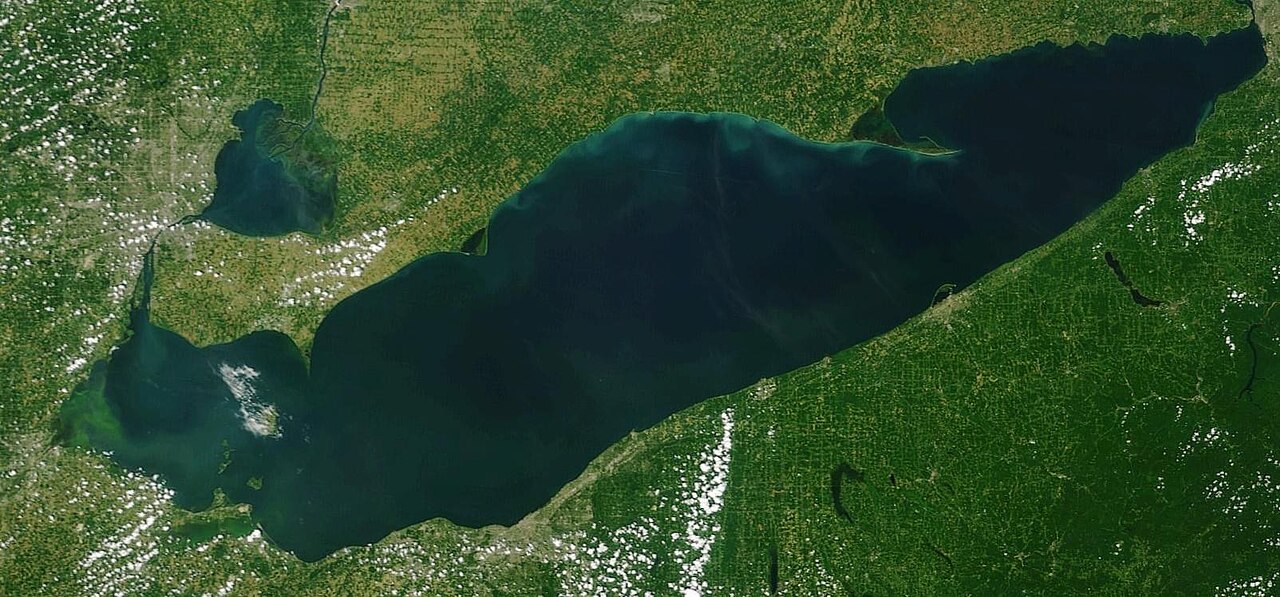
Lake Erie is the fourth-largest of the Great Lakes, with an area of 9,910 square miles. Bordered by Ohio, Pennsylvania, New York, and Canada, it is the shallowest of the Great Lakes, making it one of the warmest. This characteristic results in a rich biodiversity, including various fish species such as perch and walleye. Lake Erie is vital for shipping and transportation, with numerous ports along its shores. The lake’s ecosystem is impacted by urban development and agriculture, leading to concerns about water quality and pollution. Recreational activities, including boating, fishing, and swimming, are popular, especially in the summer months.
5. Lake Ontario

Lake Ontario, the smallest of the Great Lakes by surface area, spans 7,340 square miles and serves as the outlet to the Atlantic Ocean via the Saint Lawrence River. It is bordered by the Canadian province of Ontario and the U.S. state of New York. The lake plays a critical role in the region’s economy, supporting commercial shipping and fishing industries. Lake Ontario is known for its scenic beauty, with numerous parks and recreational areas along its shores. The lake’s waters support diverse wildlife, including migratory birds and various fish species. It is also a popular destination for boating and water sports.
6. Great Salt Lake

The Great Salt Lake, located in Utah, is the largest saltwater lake in North America, covering approximately 2,117 square miles. It is a remnant of the ancient Lake Bonneville, which existed during the last Ice Age. The lake’s high salinity supports unique ecosystems, including brine shrimp and various bird species. The Great Salt Lake is known for its distinctive landscapes, with salt flats and marshes surrounding its shores. It is a popular spot for birdwatching, especially during migration seasons. The lake also has recreational opportunities, including sailing, kayaking, and hiking in the nearby Antelope Island State Park.
7. Lake of the Woods

Lake of the Woods, spanning approximately 1,485 square miles, is located on the border of Minnesota and Canada. It is known for its stunning scenery, with over 14,000 islands and numerous bays. The lake is a popular destination for fishing, boating, and outdoor activities, attracting tourists year-round. The diverse ecosystem supports a variety of wildlife, including eagles, loons, and various fish species. Lake of the Woods is also significant for its cultural history, with many Indigenous communities living in the region. The lake’s natural beauty and recreational opportunities make it a beloved destination for nature enthusiasts.
8. Iliamna Lake

Iliamna Lake, located in Alaska, covers an area of approximately 1,014 square miles. It is the largest lake in Alaska and is known for its stunning natural beauty, surrounded by mountains and forests. The lake is a vital habitat for various wildlife, including salmon and waterfowl. Iliamna Lake is significant for local Indigenous communities, who rely on its resources for sustenance and cultural practices. The area is popular for fishing, with sport fishing opportunities attracting anglers from around the world. The remote location and pristine environment make Iliamna Lake a unique and cherished natural treasure.
9. Lake Oahe
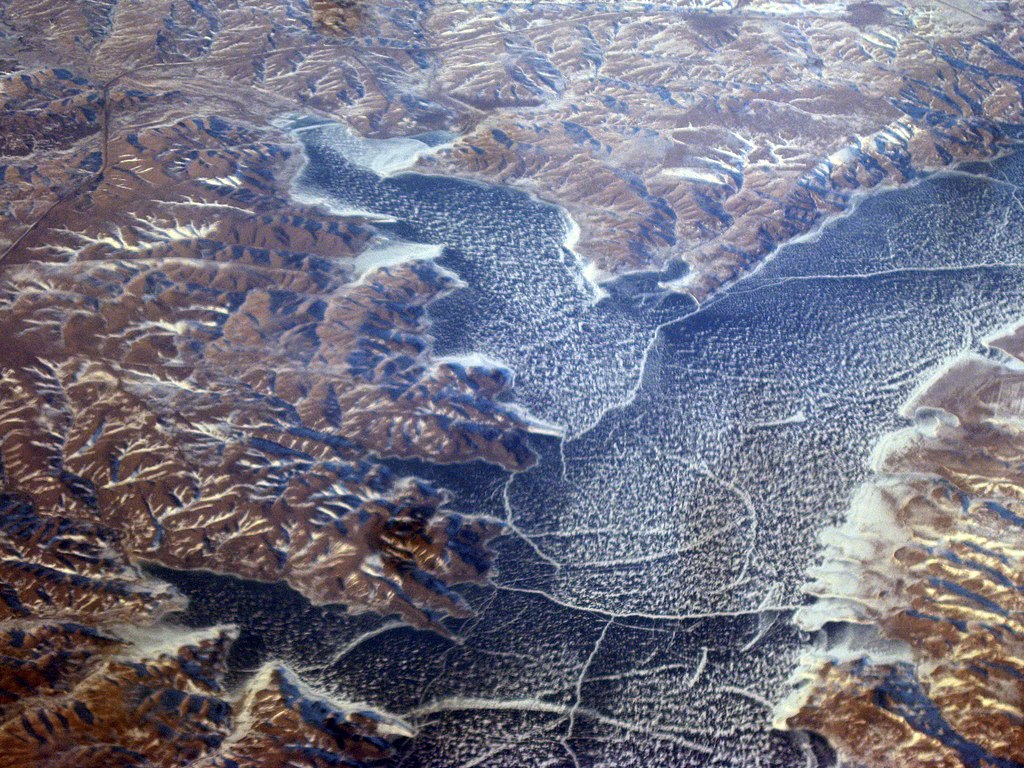
Lake Oahe is a large reservoir located on the Missouri River in South Dakota, covering approximately 685 square miles. It is part of the Oahe Dam project, which provides hydroelectric power and flood control. The lake is known for its recreational opportunities, including fishing, boating, and camping. Lake Oahe is home to various fish species, including walleye and northern pike, making it a popular destination for anglers. The scenic beauty of the surrounding landscape attracts visitors, and the lake serves as an important resource for local communities. Its vast waters and natural surroundings offer a tranquil escape for outdoor enthusiasts.
10. Lake Okeechobee

Lake Okeechobee, located in Florida, spans approximately 662 square miles, making it the largest freshwater lake in the state. The lake is known for its rich biodiversity, supporting various fish species, including bass and crappie. It plays a crucial role in the local ecosystem and is a vital water source for agriculture in South Florida. Lake Okeechobee is also a popular destination for outdoor recreation, including fishing, boating, and birdwatching. The surrounding wetlands are home to diverse wildlife, including alligators and numerous bird species. The lake’s beauty and recreational opportunities make it a beloved destination for residents and visitors alike.
11. Lake Pontchartrain
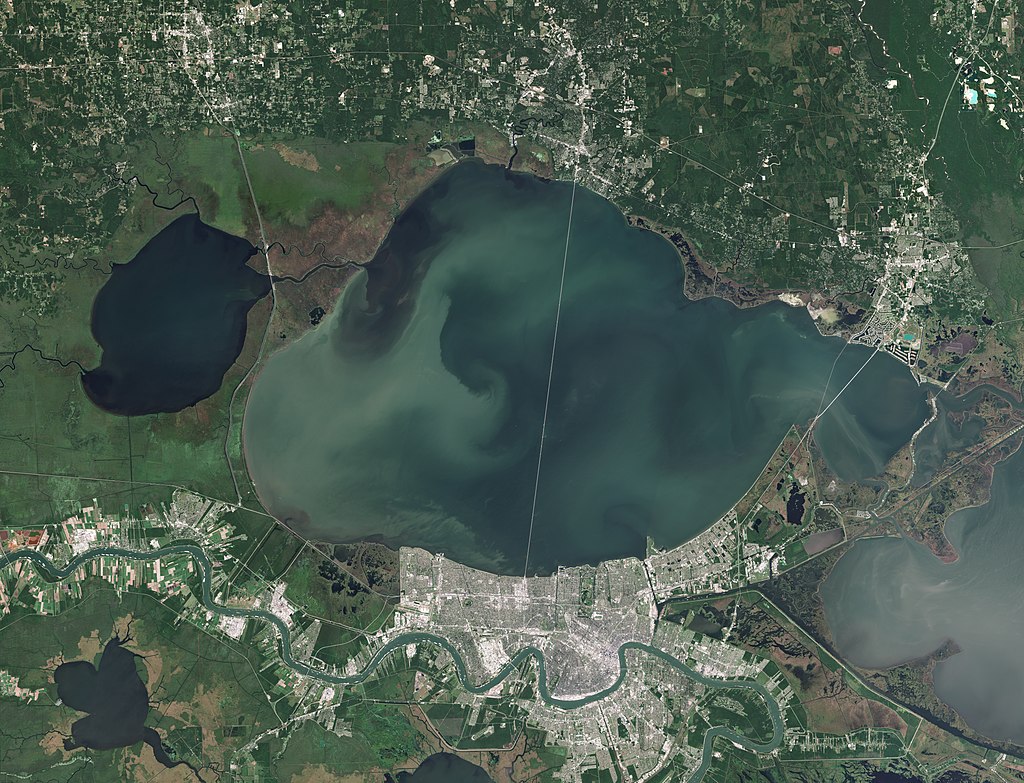
Lake Pontchartrain, located in southeastern Louisiana, covers an area of approximately 631 square miles. It is known for its brackish waters and rich biodiversity, supporting various fish and bird species. The lake is a critical resource for the surrounding communities, providing recreational opportunities such as fishing, boating, and birdwatching. Its scenic beauty is enhanced by the picturesque views of the New Orleans skyline and the surrounding wetlands. Lake Pontchartrain also plays a role in local culture and history, with various festivals and events celebrating its significance. The lake’s unique ecosystem and recreational activities make it a cherished destination in Louisiana.
12. Lake Sakakawea
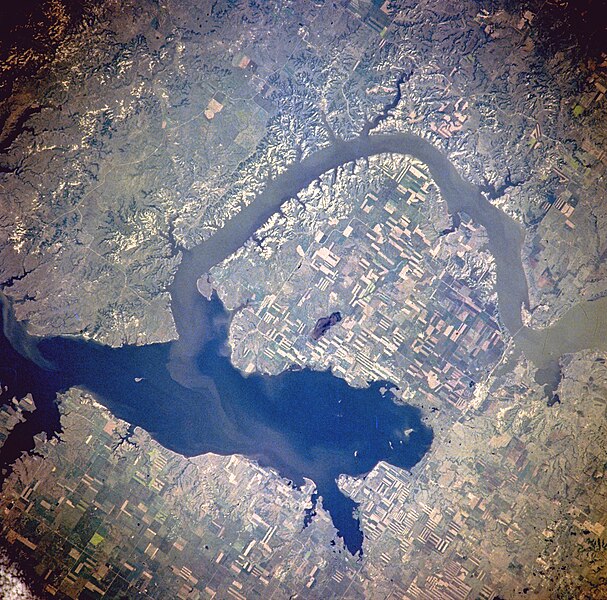
Lake Sakakawea, a reservoir located in North Dakota, covers approximately 520 square miles. Created by the construction of the Garrison Dam, the lake serves multiple purposes, including hydroelectric power generation, flood control, and recreation. Lake Sakakawea is known for its excellent fishing opportunities, with species such as walleye, northern pike, and perch. The lake’s scenic beauty is complemented by rolling hills and vast open spaces. Recreational activities such as boating, camping, and birdwatching are popular, attracting visitors throughout the year. The lake also holds cultural significance for local Indigenous communities, enhancing its importance to the region.
13. Lake Champlain
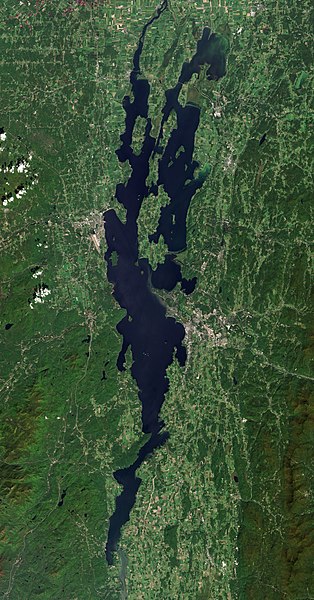
Lake Champlain, located between New York and Vermont, spans approximately 490 square miles. The lake is known for its stunning landscapes, with beautiful mountains and charming communities dotting its shores. Lake Champlain is a vital ecosystem, supporting various fish species and serving as a habitat for migratory birds. The lake is also rich in history, with significant cultural sites and events tied to its waters. Popular recreational activities include boating, fishing, and swimming, attracting locals and tourists alike. The scenic beauty and diverse wildlife make Lake Champlain a treasured destination in the northeastern United States.
14. Becharof Lake

Becharof Lake, located in Alaska, covers an area of approximately 453 square miles. It is part of Becharof National Wildlife Refuge, which protects the unique ecosystems surrounding the lake. Becharof Lake is known for its stunning natural beauty, with pristine waters and abundant wildlife. The lake supports various fish species, including salmon, and serves as a vital habitat for migratory birds. Outdoor recreational activities such as fishing, kayaking, and hiking are popular in the area. The lake’s remote location and untouched environment make it a cherished destination for nature lovers and those seeking solitude in Alaska’s wilderness.
15. Lake St. Clair
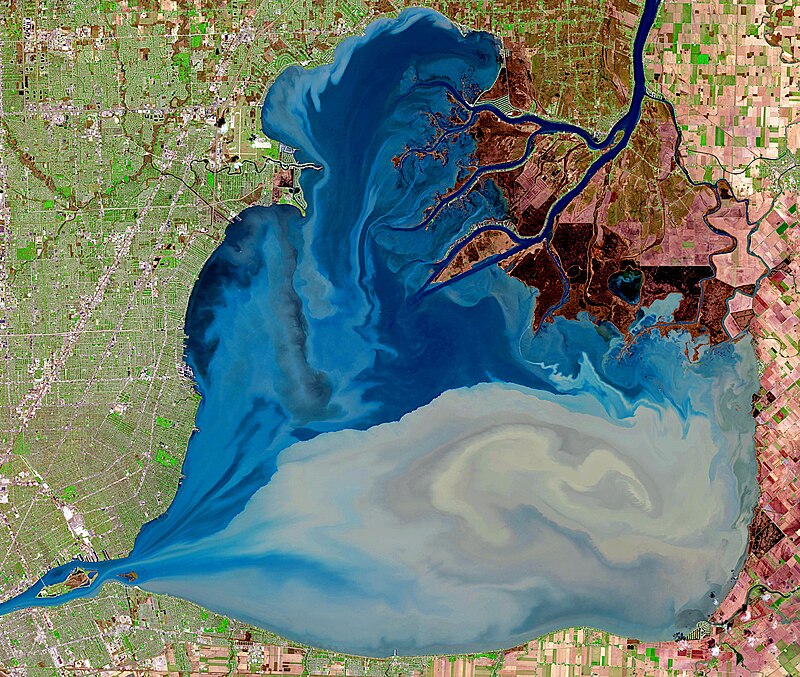
Lake St. Clair, located between Michigan and Ontario, covers an area of approximately 440 square miles. It is known for its recreational opportunities, including fishing, boating, and swimming. The lake serves as a vital link between Lake Huron and Lake Erie, playing a significant role in regional shipping and transportation. Lake St. Clair is home to a diverse ecosystem, supporting various fish species and wildlife. The surrounding area features numerous parks and nature reserves, attracting visitors for outdoor activities and relaxation. Its scenic beauty and recreational opportunities make Lake St. Clair a popular destination in the Great Lakes region.
16. Red Lake

Red Lake, located in Minnesota, covers approximately 427 square miles. It is known for its unique red-colored waters, resulting from iron oxide. The lake is one of the largest in Minnesota and is home to a diverse ecosystem, supporting fish species such as walleye and northern pike. Red Lake is significant for local Indigenous communities, who rely on its resources for fishing and cultural practices. The lake offers various recreational opportunities, including fishing, boating, and wildlife viewing. Its serene surroundings and rich cultural heritage make Red Lake a treasured natural resource in the region.
17. Selawik Lake
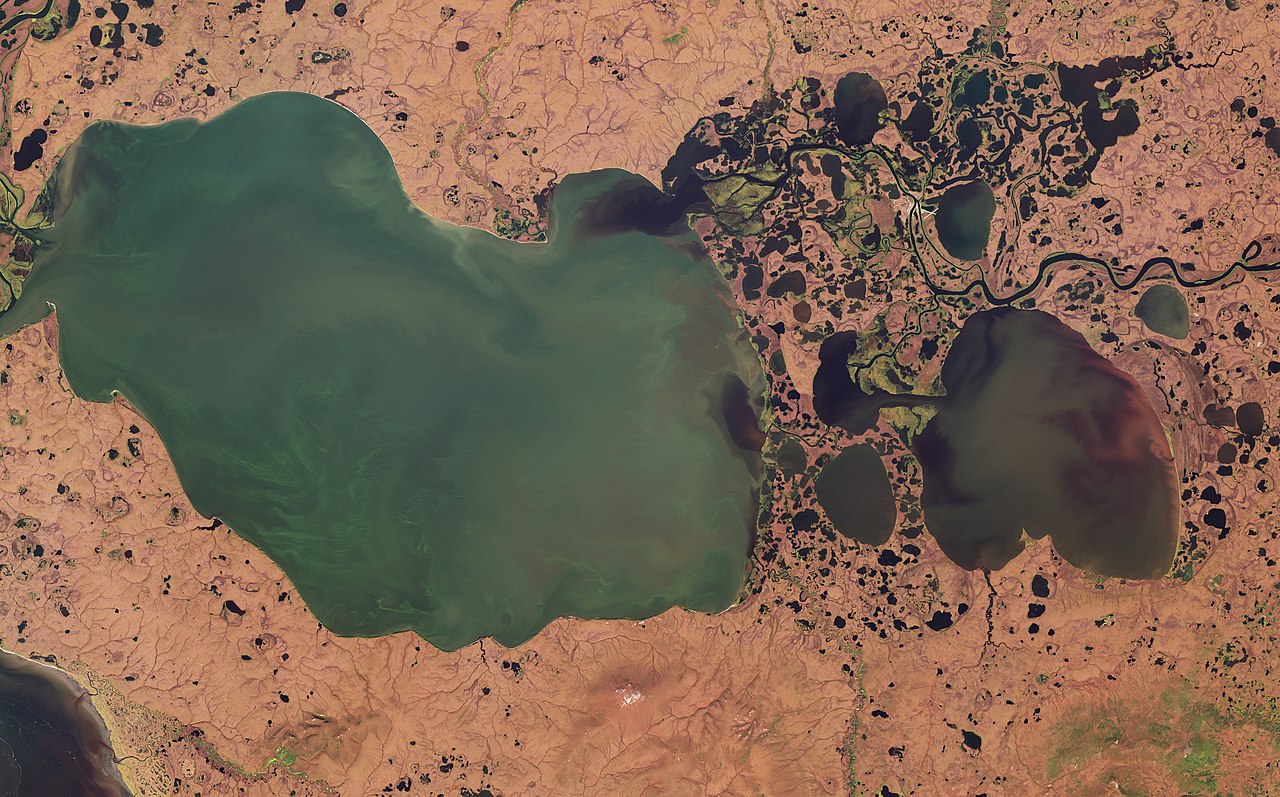
Selawik Lake, located in northwest Alaska, covers approximately 404 square miles. It is a vital habitat for migratory birds and various fish species, making it significant for both wildlife and local communities. The lake’s remote location and pristine environment offer excellent opportunities for fishing and outdoor recreation. Selawik Lake is surrounded by wetlands and tundra, creating a unique ecosystem that supports diverse wildlife. It is also important for local Indigenous cultures, providing resources and serving as a site for traditional practices. The lake’s natural beauty and ecological significance make it a cherished destination in Alaska.
18. Fort Peck Lake
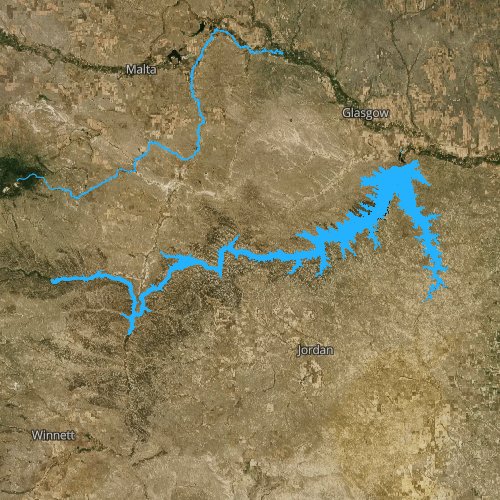
Fort Peck Lake, located in Montana, spans approximately 393 square miles. It was created by the Fort Peck Dam on the Missouri River and serves multiple purposes, including hydroelectric power generation and flood control. The lake is known for its recreational opportunities, including fishing, boating, and camping. Fort Peck Lake supports a variety of fish species, attracting anglers from across the region. Its scenic beauty, with vast open waters and surrounding hills, makes it a popular destination for outdoor enthusiasts. The lake also holds historical significance, with archaeological sites and cultural heritage tied to its waters.
19. Salton Sea

The Salton Sea, located in California, covers an area of approximately 347 square miles. It is a saline lake that was formed by accident in the early 20th century. The lake is known for its unique ecosystem, which supports various fish and bird species. The Salton Sea is a vital stopover for migratory birds along the Pacific Flyway, attracting birdwatchers and nature enthusiasts. However, the lake faces environmental challenges, including rising salinity and declining water levels. Despite these issues, the Salton Sea remains a popular destination for recreational activities, including boating and fishing.
20. Rainy Lake

Rainy Lake, located on the border between Minnesota and Canada, spans approximately 345 square miles. It is known for its stunning natural beauty, featuring clear waters and numerous islands. Rainy Lake is popular for outdoor recreation, including fishing, boating, and camping. The lake supports a diverse ecosystem, including various fish species and wildlife. The surrounding area is rich in history, with Indigenous communities and fur trading routes contributing to its cultural significance. Rainy Lake is a cherished destination for those seeking a serene escape in nature, attracting visitors year-round for its recreational opportunities.
21. Devils Lake
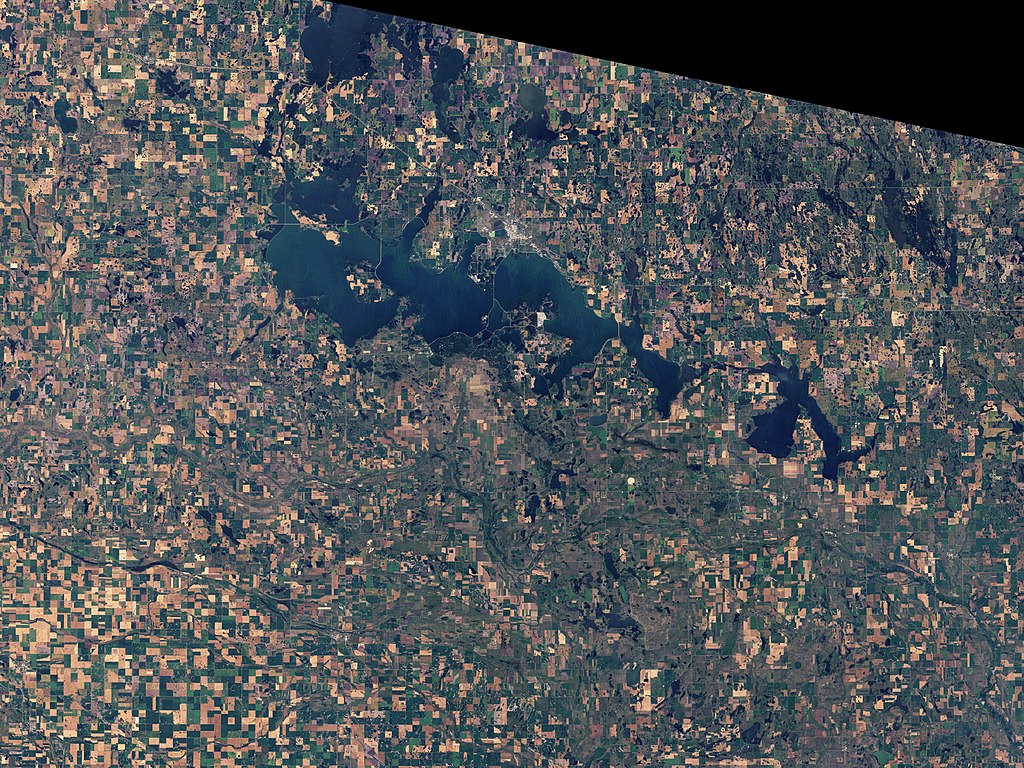
Devils Lake, located in North Dakota, covers approximately 300 square miles. It is known for its scenic beauty and recreational opportunities, including fishing, boating, and birdwatching. The lake supports a variety of fish species, including walleye and northern pike, making it a popular destination for anglers. Devils Lake is also home to various migratory birds, attracting birdwatchers from near and far. The lake’s unique ecosystem and surrounding landscapes provide opportunities for outdoor exploration and appreciation of nature. The area holds cultural significance for local Indigenous communities, enhancing its importance to the region.
22. Toledo Bend Reservoir

Toledo Bend Reservoir, located on the Texas-Louisiana border, spans approximately 284 square miles. It is one of the largest man-made lakes in the U.S., created for flood control and hydroelectric power generation. The reservoir is known for its excellent fishing opportunities, particularly for bass and crappie. Toledo Bend attracts numerous visitors for recreational activities such as boating, swimming, and camping. The lake’s scenic beauty, with vast waters surrounded by forests and hills, makes it a popular destination for outdoor enthusiasts. Its recreational significance and natural charm contribute to its status as a cherished landmark in the region.
23. Lake Powell

Lake Powell, located on the border of Utah and Arizona, covers approximately 251 square miles. It is a man-made reservoir created by the Glen Canyon Dam and is known for its stunning red rock formations and crystal-clear waters. Lake Powell is a popular destination for recreational activities such as boating, fishing, and houseboating. The lake’s scenic beauty attracts millions of visitors each year, offering opportunities for exploring canyons and beaches. The diverse ecosystem supports various fish species, and the area is rich in cultural history, with archaeological sites and Native American heritage enhancing its appeal.
24. Kentucky Lake
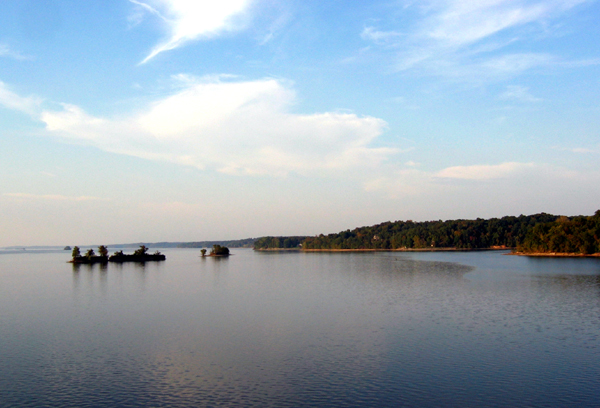
Kentucky Lake, located in western Kentucky, spans approximately 250 square miles. It was created by the construction of the Kentucky Dam on the Tennessee River and serves multiple purposes, including hydroelectric power generation and flood control. The lake is known for its recreational opportunities, including fishing, boating, and camping. Kentucky Lake supports a variety of fish species, attracting anglers from across the region. Its scenic beauty, with vast open waters and lush surrounding landscapes, makes it a popular destination for outdoor enthusiasts. The lake also hosts various events and festivals, celebrating its significance to the local community.
25. Lake Mead

Lake Mead, located in Nevada and Arizona, covers approximately 247 square miles. It is a man-made reservoir created by the Hoover Dam and is known for its striking desert landscape and recreational opportunities. Lake Mead is a popular destination for boating, fishing, and water sports, attracting millions of visitors each year. The lake supports various fish species, making it a prime location for anglers. Its scenic beauty and outdoor activities, including hiking and camping in the surrounding areas, contribute to its popularity. Lake Mead plays a crucial role in providing water resources for the southwestern United States.




